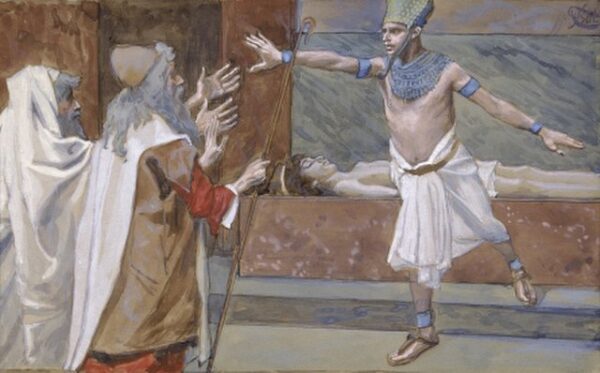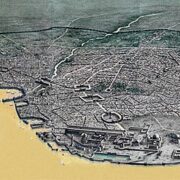
A team of scientists may have revealed the face of one of the Bible’s most known figures.
Most people know the story of Moses from the Book of Exodus. One day, God spoke to Moses and revealed his plan to free the Israelites from their captivity in Egypt. Moses was tasked with confronting the all-powerful Pharaoh, the powerful ruler of Egypt, to demand his people be let go. Despite Pharaoh’s refusal, Moses persisted and warned of the ten plagues that would soon ravage Egypt if he did not comply.
The final and most devastating plague was the death of the firstborn, which caused Pharaoh to finally relent and allow the Israelites to leave. With the guidance of God, Moses led his people through the Red Sea and into the wilderness, where they would wander for forty years before reaching the promised land.
Led by researchers from Egypt and England, a team has “digitally unwrapped” the mummy of Ramses II, showing the world what the famous pharaoh looked like at the age of 90.
Scientists used earlier CT scans of the pharaoh’s mummy and applied to them analysis software to parse out details. Experts were then able to differentiate between the skull and other materials used during the embalmment process and produce 3D images of the skull. The face was then reconstructed using Egyptian measurements of facial muscle layers, according to The Times of Israel.
“The software identifies the properties of the various layers of materials on the mummy’s face, such as overlying linen bandages, and allows for the digital unwrapping of the pharaohs,” Dr. Sahar Saleem, a professor of radiology at Cairo University who led the project, said in an interview with AuntMinnieEurope.com.
“Different populations and ethnicities have different average measurements in various regions of the face including the slant of the forehead, and the nasal, malar, and labial regions,” she said. “The most scientific approach is to use measurements from a population that is as close as possible to your subject — which is what we did.”
“The visualization of fine facial features such as ear piercings and hairstyle was also made possible by modern image reconstruction software,” Saleem said.
“King Ramesses II was a great warrior who ruled Egypt for 66 years,” Saleem told the radiology magazine AuntMinnieEurope.com. “Bringing Ramesses’ face to life in his old age and as a young man reminds the world of his legendary status,” she said.
Rameses II, often called Rameses the Great, lived one of ancient Egypt’s most powerful pharaohs ever. He reigned for an amazing 66 years and directed a period of great prosperity and expansion for his kingdom. Rameses II was known for his military prowessand led numerous successful campaigns against neighboring nations. He was also a prolific builder, responsible for the construction of some of the most impressive temples and monuments still standing in Egypt.
Despite his military conquests and building projects, Rameses II is perhaps best known for his diplomatic efforts. He negotiated several important treaties with neighboring nations, including a famous peace treaty with the Hittites, which resolved a war that had been fought for decades that brought an end to decades of war between the two powers.
Brittanica notes, “The reign of Ramses II marks the last peak of Egypt’s imperial power. After his death Egypt was forced on the defensive but managed to maintain its suzerainty over Palestine and the adjacent territories until the later part of the 20th dynasty, when the migration of militant Sea Peoples into the Levant ended Egypt’s power beyond its borders. Ramses II must have been a good soldier, despite the fiasco of Kadesh, or else he would not have been able to penetrate so far into the Hittite empire as he did in the following years; he appears to have been a competent administrator, since the country was prosperous, and he was certainly a popular king. Some of his fame, however, must surely be put down to his flair for publicity: his name and the record of his feats on the field of battle were found everywhere in Egypt and Nubia.”
The mummy of Ramses II was discovered in 1881 and currently resides in the The Egyptian Museum in Cairo, Egypt.
[Read More: These ‘Killers’ Are Waiting Outside of San Francisco]










Nice 2 see a face to a Biblical charcter now do same for the whole Bible OT NT
Bravo